What is the Internet of Things or IoT? 2021 Real Examples
Inside this extensive guide, we’ll provide you with everything you need to know about the Internet of Things along with examples so you can see how it all works together.
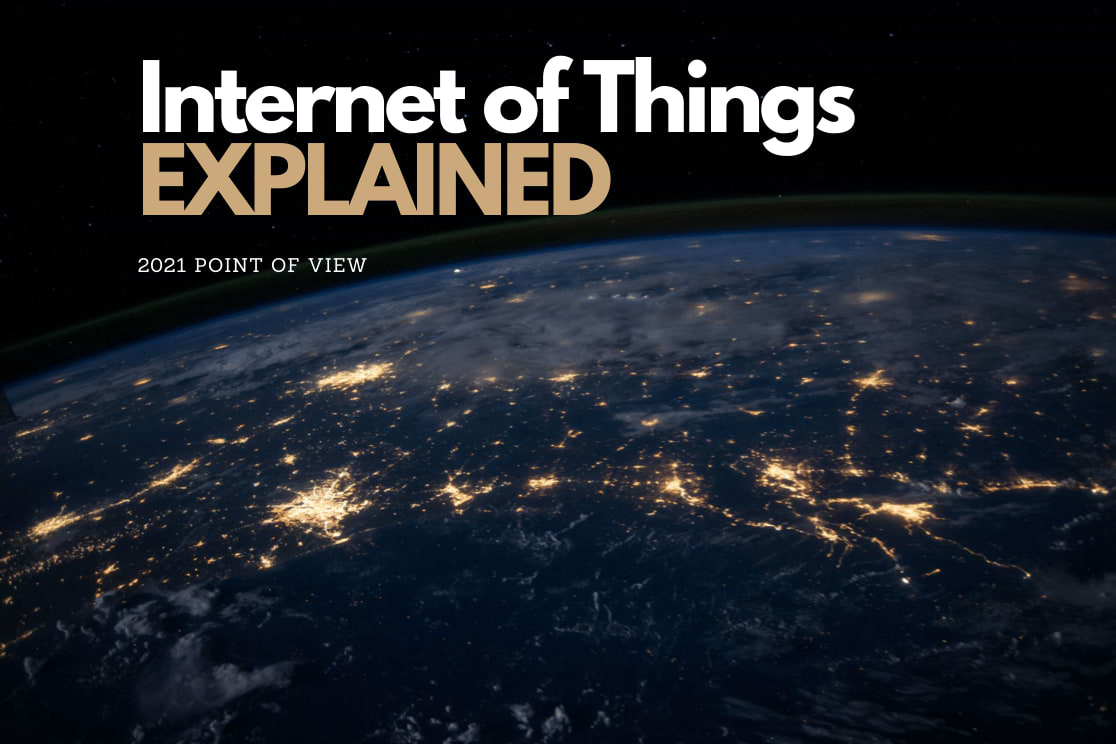
Let’s start with a more nuanced IoT meaning.
IoT Definition
When doing your own research, it’s likely that you found a lot of technical answers that skirted around the true IoT meaning and definition.
Rather than have a full understanding of what IoT means, you’re probably feeling confused. Here’s an example of an IoT definition that is so technical that even we struggle to understand what it means…
“The internet of things, or IoT, is a system of interrelated computing devices, mechanical and digital machines, objects, animals, or people that are provided with unique identifiers and the ability to transfer data over a network without requiring human-to-human or human-to-computer interaction.”
As you read on, you’ll learn a more simple definition of IoT that makes sense.
Before we get into all of the details, please note that we’ll use the terms “Internet of Things” and “IoT” interchangeably.
A Non-Technical Explanation of The Internet of Things
As you’re reading this guide, you could be using your mobile phone, your work desktop computer, or even a tablet as you travel to work. No matter what device you’re using, you’re connected to the internet in order to be able to view this content.
Being connected to the internet is a given in this digital age we now live in. Information is at our fingertips in an instant, particularly with portable devices like smartphones, tablets, and laptops being easily accessible for most. But what about the things you don’t see? What about the other things that are connecting to the internet?
This is where we start to explain what The Internet of Things really means. It encompasses all things within the entire world and connects them to the internet.
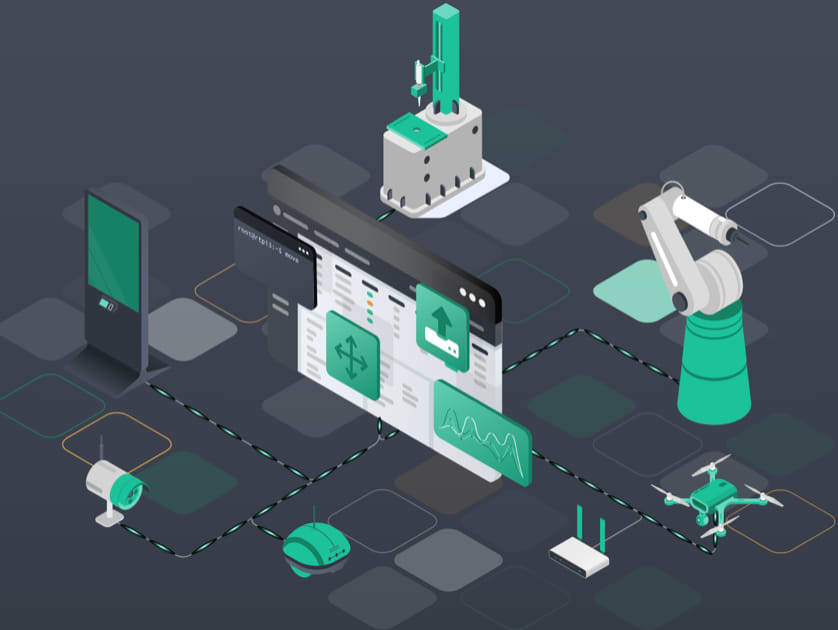
Where a lot of confusion comes from is that IoT is so broad in its definition. It can be hard to get a direct definition because there are so many options, examples, and possibilities within the IoT platforms that are available.
This is what makes IoT so exciting but also hard to understand at times.
The History of The Internet of Things
Science fiction has long foretold of a world full of connected devices and sensors taking over. It’s one of the oldest storylines and still used today in the sci-fi genre. But according to IoT historians, a vending machine located at Carnegie Mellon that was connected in 1970 to ARPANET is believed to be the first IoT device. The term Internet of Things wasn’t actually coined until 1999 by a British technologist, Kevin Ashton.
How Does The Internet of Things Work?
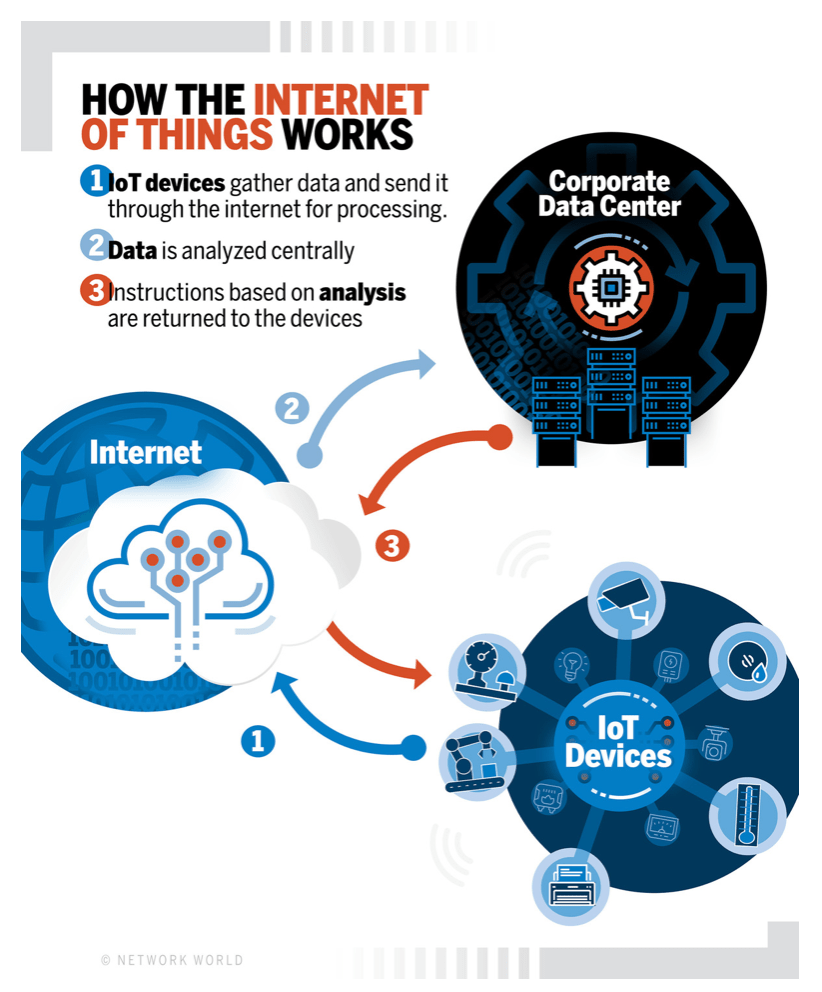
Basically, the IoT are devices that collect data when they are connected to the internet. They have an IP address. They can be as simple as a sensor or as complex as a supercomputer powering autonomous machines that move products around factories.
For data to be useful to us, it needs to be collecting, then processed, filters applied, and then finally analyzed to determine the action that needs to take place based on all of this information.
When you connect multiple things together via the internet, they collect the data and send it to a gathering point. This data is sent wirelessly or on a wired network. This data is sent to a data center (it can be on-premises or cloud-based) that then stores and computes the data, or it can be transferred or staged, with other devices compiling the data before it’s sent to the data center.
Edge devices (such as Linux devices) will also need upstream connectivity to send data that can then be processed and stored.
The image below gives you an idea of the flow of the IoT.
One of the easiest ways to understand The Internet of Things is to see what the benefits of connecting things to the internet truly looks like.
Benefits of IoT
When you’re able to connect anything to the internet, it’s now capable of sending or receiving information. With this ability, it makes the thing “smart”, and the more a thing is smarter, the better it is.
A clear and easy-to-understand example of this is the use of smartphones. Your phone is no longer just a way to make and receive phone calls, you can now use it to send a text message, listen to music, take photos.
And that alone is amazing. But take a minute to think about listening to music on your smartphone. You’re able to do this because you’re accessing the music from somewhere else (it’s not stored on your phone, although it can be), from somewhere in “the cloud”. Your smartphone requests the song that you’ve chosen, and it receives the information to then stream it through the internet wirelessly. This results in the song playing through your smartphone speakers.
For a thing to be smart, it doesn’t have to be a supercomputer or have huge storage capabilities. It simply needs to be connected to a supercomputer or huge storage via the internet. By being connected, the thing is now transformed into something more, something smarter.
When considering how The Internet of Things really works, we can put all things into three different categories:
- Sensors – these collect data and then send the data somewhere
- Computers – these receive information and then act on it
- Things that can do both
Let’s look at how these three work.
#1: Sensors
Sensors send and receive data. They can do things like measure air quality, temperature, light, motion, pretty much anything you can think of. As long as the sensor is connected to the internet, we can collect the data from the environment the sensor is located in, which then gives us information to make better decisions.
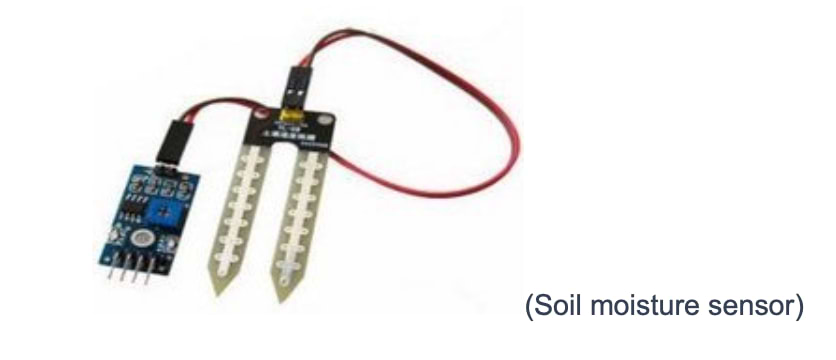
An example of how a sensor is used out in the field is on a farm. Let’s say you’re a farmer and you want to monitor the soil moisture so you know when the best time is to water your crops and with how much water. A soil moisture sensor can provide a farmer with information so that they can give their crops the exact amount of water they need.
Our own senses provide us with information to make sense of our environments, sensors provide this same capability to the machines they are connected to.
#2: Computers and machines
Computers and machines (such as printers) receive information and act on it. Whether it’s through us inputting data or receiving information over the internet, a machine acts based on what it receives.
For example, your automatic garage door receives a signal from your remote device (wireless) and your garage door opens. But what if using IoT allowed you to both collect information and then act on it? That’s the real power of The Internet of Things.
#3: Both
Using the examples we’ve already mentioned, let’s start with the farming scenario. The soil moisture sensors tell the farmer when the best time is to water their crops. The farmer can turn the irrigation system on or off as needed. Using an IoT platform, the farmer isn’t required for this process to take place. The irrigation system can automatically turn on and off as needed, based on the information it receives from the soil moisture sensor.
But what would it look like to expand beyond this information? What if the irrigation system was also capable of receiving information about the weather through its internet connection? It could then act based on information received, like an 80% chance of rain. Then the irrigation system might choose not to water the crops because the likelihood of rain negates the need for the irrigation to turn on.
The possibilities are endless when you build out an IoT platform that connects everything to the internet. All of the information received in the farming scenario could be sent to supercomputers that are in the cloud. They can run algorithms that analyze the information received, allowing more information to inform and predict future crop conditions and even prevent crop losses.
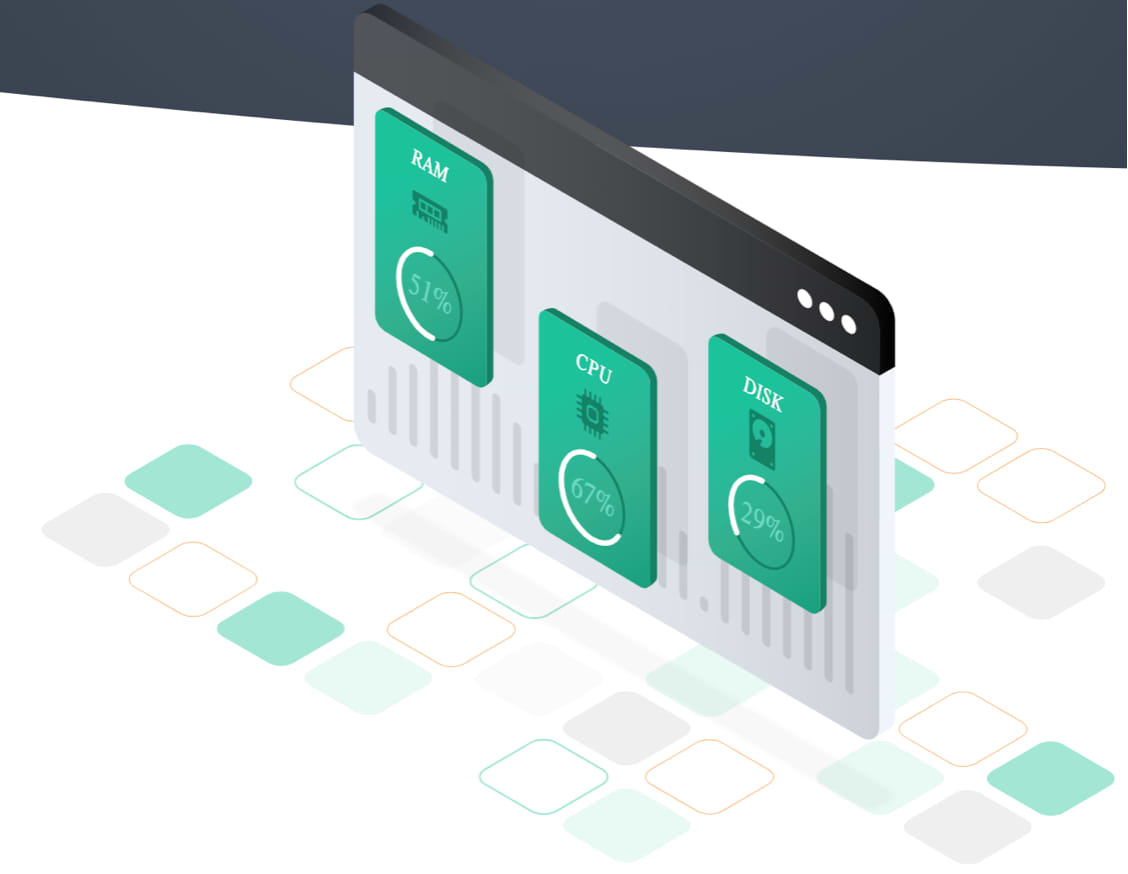
Imagine what it would look like if multiple sensors were added, ones that measured sunlight, temperature, even air quality. The algorithms could learn even more and provide more detailed solutions. They provide insights that allow decisions to be made that minimize the risk of losses for a farmer.
How Big Is The IoT?
You might be wondering just how big The Internet of Things really is. In a nutshell, it’s enormous. Priceonomics states: The number of connected devices is expected to grow to 50 billion and beyond (as of 2020) and the annual revenue from IoT sales is forecast to hit $1.6 trillion by 2025.
Now that you’ve got a good understanding (we hope) of The Internet of Things and how it all works, let’s look at examples of IoT devices and their application in the real world.
Examples Of IoT Devices
It’s likely that you’re familiar with a lot of IoT devices by now, you just didn’t know that’s what they were. Remember, an IoT device is anything that is capable of connecting to the internet and collecting information, and sending that information to another thing to be processed.
In real-world applications, this could be your appliances at home. The advent of smart home devices is on the rise, allowing you to manage your home temperature and security from a tap on your smart home app.
It could be a sensor inside an industrial factory that monitors air quality, sending data back to a computer to adjust extraction fans based on the information it receives. Even machines can be considered IoT devices. If they are connected to the internet and send or receive data and act on that data, they are part of the IoT ecosystem.
In business applications, it could be your Linux devices that need remote OTA updates via your own custom-built IoT endpoint. If it’s connected to the internet, it’s an IoT device. Before we dive into more examples, let’s consider how you manage your IoT devices.
IoT Device Management
In order for all of your devices to work well together, they need to follow specific protocols. You will need to make sure they have proper authentication, are configured the way you want them to work, as well as being monitored and updated as needed.
This is often constructed within your own IoT platform. There are even standards-based device management models you can now follow to ensure that your IoT devices operate well together and are never orphaned.
IoT – Edge Computing And The Cloud
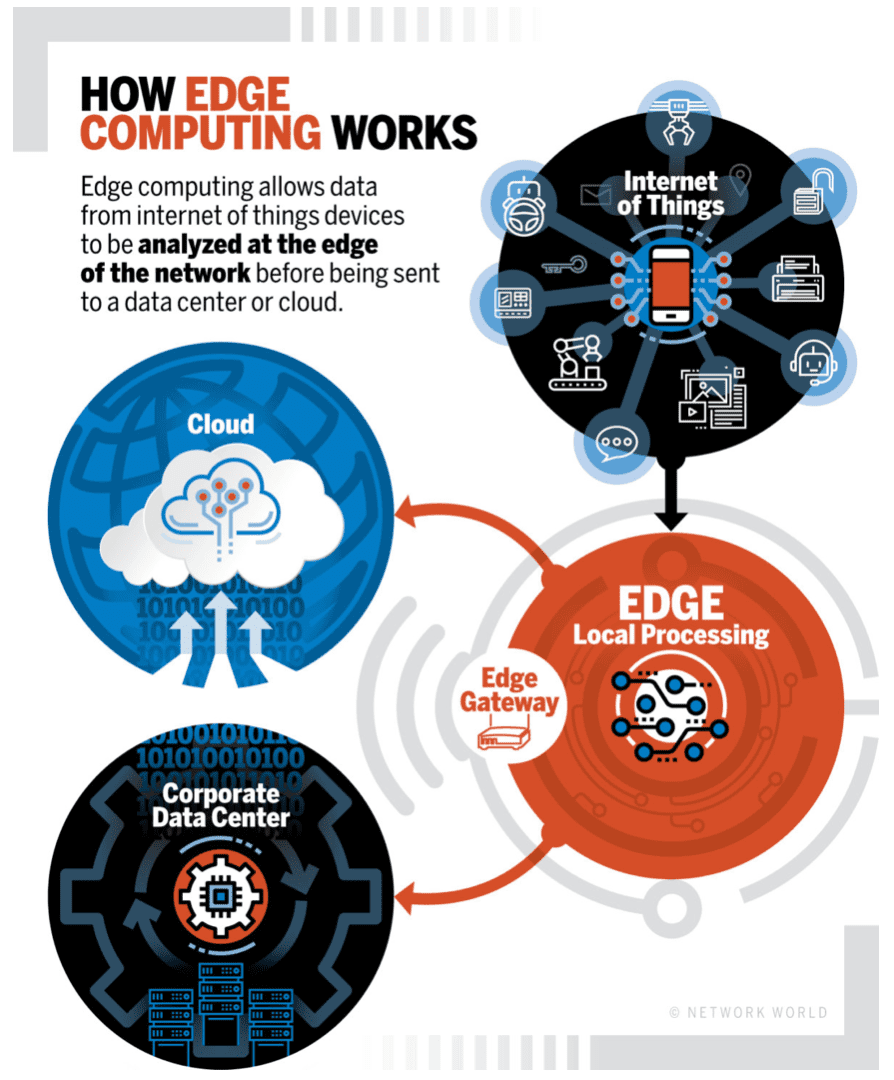
When you’re developing an IoT system, it can often receive a lot of data that comes in fast, which is why there is a new technology category called “edge computing”. This refers to appliances that are located close to IoT devices, to field the flow of data coming from them.
These edge devices process the data they receive and determine what’s relevant to send back to the centralized system for analysis. An example of this would be networked IoT security cameras. Instead of the building’s security operations center (SoC) being bombarded with all the live streams happening at once, these edge-computing devices can simply analyze the live stream videos and only alert the SoC when one of the security cameras detects movement.
In most cases, that data, once processed, ends up somewhere in the cloud. Cloud computing is a great option for most IoT situations where the data might come in intermittently or on an as-needed basis. There are many big players in this space to support IoT cloud-based platforms, such as Amazon, Google, and Microsoft.
IoT Platforms
With such heavy hitters in the cloud computing space, it’s no wonder that they now offer a place to not only house the data for your IoT system, they are also offering cloud-based IoT platforms. These platforms provide the functionality needed to manage all elements of your IoT systems.
An IoT platform is the middleman (or middleware). It connects your IoT devices and edge devices with applications you use to process the IoT data received.
There are many options available when it comes to choosing an IoT platform, so it’s important that you understand your core functionalities before working with one.
IoT and Business
There are many applications for a business to use The Internet of Things, including keeping track of a customer’s order, stock levels, device updates, etc. No matter what industry your company is in, it will benefit from implementing an IoT system.
At JFrog Connect, we specialize in helping companies update, control, monitor, and secure remote Linux & IoT devices, at scale, with the click of a button.
We work with the following industries:
- Agriculture – we keep the data from your field device sensors in one place
- Automotive – we help you secure and manage connected components for vehicles
- Consumer – we help you manage millions of products that are in every home and office
- Healthcare – we help you manage and secure connected medical devices
- Industrial – we help you manage connected devices in IoT and IT/OT sensors
- Logistics – we help you manage robots and complete systems remotely
- Retail – we help you automate checkout and smart retail stores and robots
- Smart City – we help you manage smart city devices from cameras t
sensors - Smart Energy – we help you manage connected devices in critical infrastructure
- Telecom – we help you manage and secure network equipment
10 Internet of Things Examples
#1: Smart Irrigation
In agriculture, one of the more innovative IoT examples is where a sensor can measure the amount of moisture in the soil, along with weather conditions and sunlight hours. Once parameters are set to monitor and collect this information, the sensor then relays this information back to the main data center which then acts based on the information received. This could be to turn the irrigation machine off or on or to not turn it on at all because of predicted rainfall. Farmers are equipped to save water and produce crops that have a larger yield.
#2: Energy Management
A lot of businesses monitor the energy their devices consume, particularly embedded Linux devices. In the manufacturing industry, large amounts of power are consumed every second. When IoT devices are configured correctly, they can help optimize device power management and reduce power waste by enabling power-saving modes where possible.
#3: Enterprise Asset Management
Businesses are always looking for ways to improve device and machine health to keep them running for longer and to increase output. This is enterprise asset management. From an industrial setup, it’s the most common use of IoT in the field. Using sensors to determine when a machine requires maintenance allows for efficiency in checks and meets safety compliance requirements with ease.
#4: Outdoor Surveillance
One of the most common examples of daily life IoT devices is using outdoor cameras that are connected to the internet. You can get timely alerts and information about your home, whether you’re there or not. As the technology evolves, you’ll also start to see IoT devices that can predict who is at the door through face-mapping technology so you can decide whether you want to open the door or not… brings a whole new meaning to “screening your calls”.
#5: Smart Lighting
This technology has rapidly evolved to where there are now lightbulbs that can be connected to your wifi, allowing you to turn them off remotely via an app on your smartphone… as long as you’re connected to the internet, of course. You can also schedule when you want the light to turn on, control their brightness and monitor their power consumption. You can also connect other IoT devices to allow you to turn on and off your lights by voice.
#6: Smart Parking
Smart parking has evolved and as an IoT example, it’s one of the more popular options used in large parking facilities. This can be done by counting the number of cars that enter a parking facility and then counting the number of cars that leave. This can help determine the number of car spaces available, or when a car parking facility is full. In some instances, an IoT device can determine whether a car spot is occupied and turn a light green or red based on the response its sensor receives.
#7: Healthcare Monitoring
IoT devices allow the remote monitoring of patients, as well as structural architecture such as vibrations within a building such as a hospital. This information can then help determine if a patient needs to come into the hospital for medical attention, through to part of a building is weak and hospital patients needing to be moved while building maintenance is completed.
#8: Traffic Management
Ever wondered how every time you approach a set of lights at night, they turn green almost instantly? That’s because the data that’s being generated by the light’s cameras and sensors is providing information to IoT devices to process and automate the timing of the traffic lights. IoT devices are also used in automating road toll collection by wirelessly reading a toll device attached to the windscreen of your car that ‘dings’ as you cross the toll collection zone. As long as you have funds on your toll device, the toll is collected or an automated notification is sent to you asking you to top up.
#9: Supply Chain Control
When it comes to the retail industry, The Internet of Things can be seen in the application through supply chain management and control systems. This is done through the tracking of a shipment, monitoring stock levels, as well as getting live feeds inside a container to monitor conditions such as humidity and moisture levels.
#10: Noise Monitoring
Large cities can often struggle to manage noise pollution from large factories. Through IoT devices, they can monitor sensors on these buildings that report noise levels back to a data center managed by the city. If noise levels exceed recommended limits on a regular basis, the city can warn the company and/or apply a fine.
There are many applications for using The Internet of Things. The next step is to determine which one you’ll implement first.



